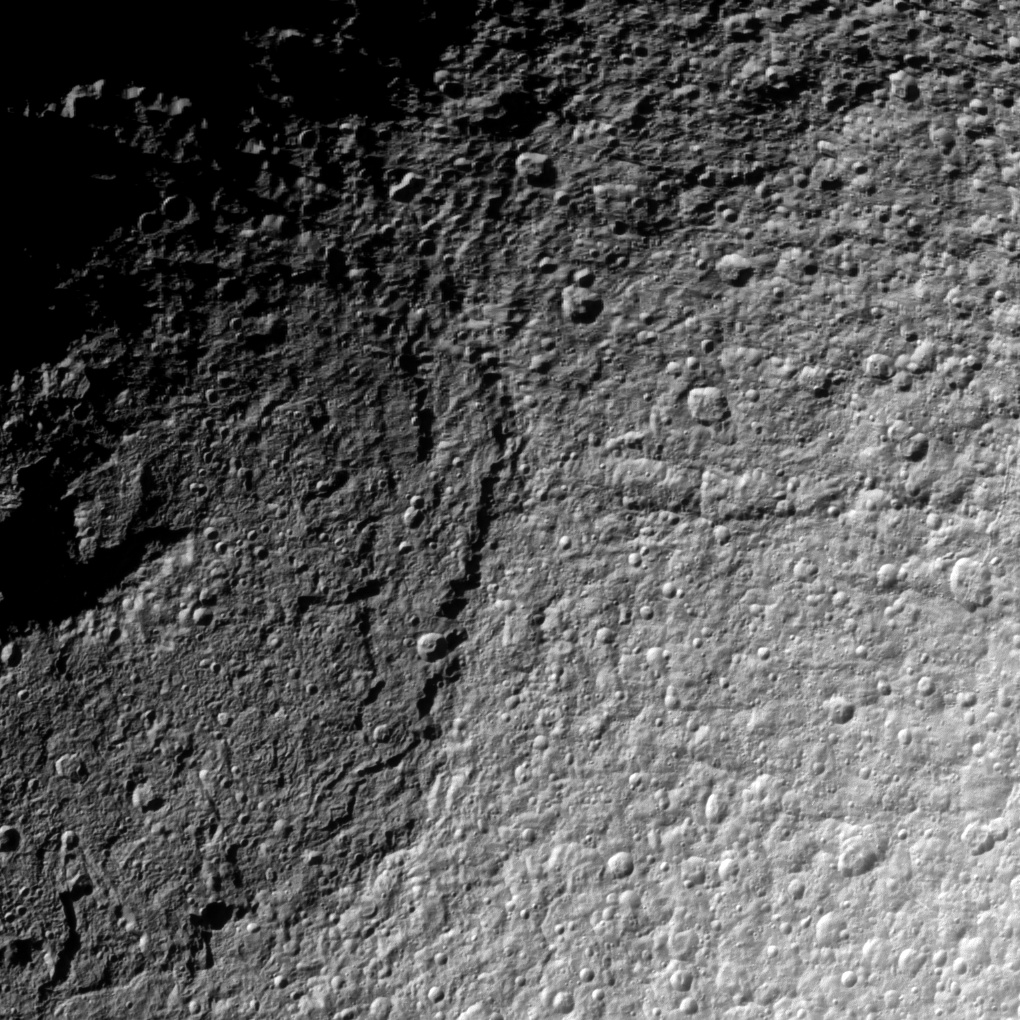Credit: NASA/JPL/Space Science Institute
Behold the battered terrain of the massive crater Odysseus in this new image from Cassini.
Check out the cassinified image of the fractured surface
When Voyager first imaged the huge Herschel Crater on Mimas, scientists could not help comparing the small and battered moon to the Death Star in George Lucas’ science-fiction adventure Star Wars. But Saturn’s moon Tethys is also home to a massive crater; the remains of an ancient impact that nearly destroyed the tiny moon. Odysseus Crater dominates the surface of Tethys covering two-thirds of the surface. The tiny moon is just 1062 kilometers, or 660 miles, across. Using information from Voyager and Cassini, scientists found that the heavily cratered and fractured moon is made up of mostly water ice with a small amount of rock.
Odysseus Crater takes up the entire left side of this image.
With the Sun over Cassini’s shoulder, the spacecraft took this image of the northern part of Odysseus June 28, 2012 while the spacecraft zipped along just 72,000 kilometers (45,000 miles) above Tethys. If you’re interested, the resolution of this image is about 430 meters (1,409 feet) per pixel; meaning that one pixel takes up 430 meters in the image.
John Williams is a science writer and owner of TerraZoom, a Colorado-based web development shop specializing in web mapping and online image zooms. He also writes the award-winning blog, StarryCritters, an interactive site devoted to looking at images from NASA’s Great Observatories and other sources in a different way. A former contributing editor for Final Frontier, his work has appeared in the Planetary Society Blog, Air & Space Smithsonian, Astronomy, Earth, MX Developer’s Journal, The Kansas City Star and many other newspapers and magazines.


Odysseus is a great big crater. Got it.
The crater doesn’t even cover 2/3 of one side of Tethys, let alone 2/3 of the total surface of the moon. In this picture (http://www.ciclops.org//view_media.php?id=31033) I could stick three of this crater just in the visible, sunlit portion. Why do people keep repeating this obvious falshood?